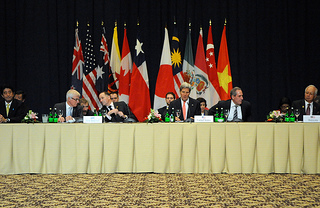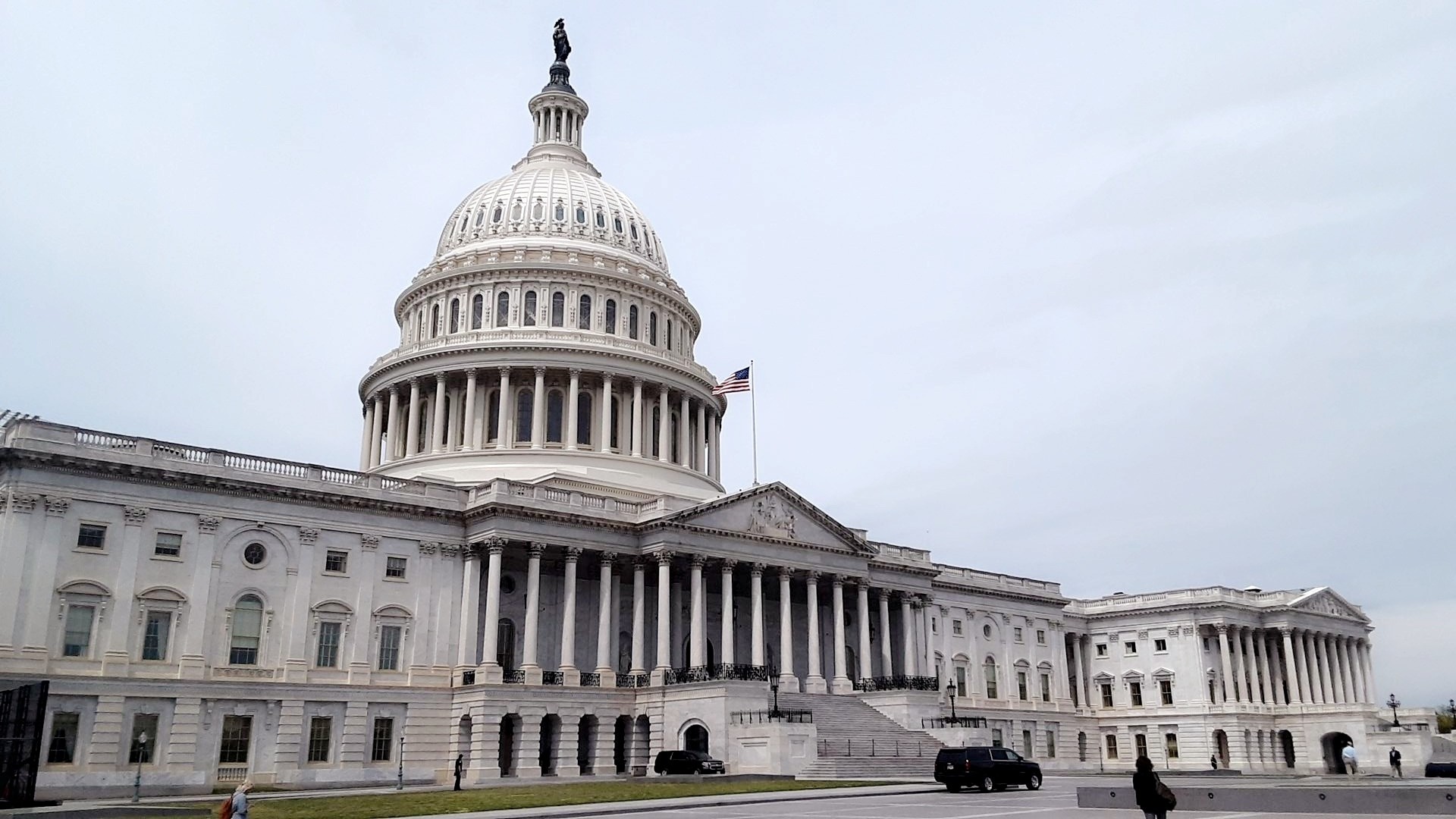by Matt Wisnieff
This is the next blog post in our series on the differences between the two climate bills: the proposed Senate bill known as Kerry-Lieberman and the passed House bill known as Waxman-Markey. We will shortly have an entry on international offsets.
Administration and Regulation
The domestic carbon offsets provisions of the proposed Kerry-Lieberman (KL) Senate bill are laid out in Title VII, Subtitle D, §§ 731-742 of the act. Section 732 provides for the establishment of an “Advisory Committee” for planning, oversight, and centralized data-collection and review, to be created jointly by the Secretary of the United States Department of Agriculture (USDA) and the Administrator of the Environmental Protection Agency (EPA).
While the Secretary and the Administrator share authority on this 9- to 15-member committee, the proposed Senate bill divides the scope of each official’s responsibility with respect to the generation and sale of particular carbon offset programs. Under § 733(c), the Secretary of the USDA is charged with administering the generation and sale of carbon offset credits with respect to any project that deals with forestry or agriculture, while the EPA is to have the same level of authority regarding all other types of offset projects.
No later than 18 months following the bill’s passage, the Secretary and the Administrator are to establish a program for the generation and sale of specific carbon offset credits. Following the recommendations of the Advisory Committee, the Secretary and the Administrator are to ensure that these credits represent “additional, measurable, verifiable, and enforceable emission reductions in accordance with the requirements of this part, so that a credit represents an emission equivalent to the emission represented by an emission allowance.” (§ 733(a)(1)(B)(i)) The KL bill also allows entities covered by the bill for emission allowances to cover up to 15% of their carbon emissions through offsets. They may demonstrate compliance for a particular calendar year “up to 15 percent of the combined emissions and attributable emissions of the covered entity by holding emission allowances with a vintage year 1 to 5 years later than that calendar year.” (§ 725(c)(2)(A))
The KL bill includes a specific list of activities that may generate carbon-offset credits. They are outlined in § 734, and include: (1) non-landfill projects such as methane collection at mines, landfills, and natural gas systems; (2) projects aimed at reducing “fugitive emissions” from the oil and gas sector; (3) non-landfill projects that involve collection, combustion, or avoidance of emissions from organic waste; (4) afforestation or reforestation of acreage not forested as of January 1, 2009; (5) forest management with the aim of increasing carbon sinks; (6) using active or depleted oil, carbon dioxide, natural gas reservoirs, and other geological formations to geologically sequester uncapped greenhouse gas emissions; (7) recycling and waste minimization products; (8) and adjustments in agricultural grassland and rangeland management practices.
For projects that are not included in the list of eligible activities under § 734, there is a petition and review process outlined under § 734(c)(3). Any person may petition for a modification of the list of eligible projects, either to add or remove a type of project from the list, provided he can show “that the type of project is, or is not, capable of generating emissions reductions in accordance with section 735.” (§ 734(c)(3)(B)(i)) Should a petitioner file to remove an item from the list of eligible offset projects, the petitioner must overcome the rebuttable presumption under § 734(b) that the activities included in the bill are “capable of generating emission reductions in accordance with section 735.” (§734(c)(3)(B)(ii)) The Committee may remove projects only if the relevant agency (USDA or EPA) determines that the carbon offset project’s environmental harms outweigh its greenhouse gas emission reduction benefits.
In order to ensure the efficacy of any offset scheme, § 735 of the KL bill describes a process for establishing standardized methodologies or performance standards to determine whether an offset project is actually contributing to a reduction in emissions. The established methodology or performance standard must be capable of (1) determining the additionality of emission reductions achieved, (2) establishing the activity or emission baseline, (3) determining the extent to which achieved emission reductions exceed the baseline, (4) accounting for and mitigating GHG leakage, and (5) otherwise ensuring that the offset project provides for real emission reductions. (§ 735(a)(2))
Section 735 also requires established methodologies or performance standards to include at least one mechanism to guard against the possibility of emissions reversal. These mechanisms may consist of (1) an offset reserve, (2) an insurance policy that “provides for purchase and provision to the Administrator for retirement of a quantity of offset credits or emission allowances equal in number to the tons of carbon dioxide equivalents of greenhouse gas released due to reversal” or (3) any other mechanism that satisfies the bill’s requirements. (§ 735(b)(1)(B)(i-iii)) Mandatory reporting to the appropriate official is also required in any event of a sequestration reversal.
If it is found by the appropriate official that a reversal was intentional, the offset project representative for the relevant offset project is required to place into the offsets reserve “a quantity of offset credits, or combination of offset credits and emission allowances equal in number to 150 percent of the number of reserve offset credits that were canceled.” (§ 735(b)(2)(B)(ii)) As for unintentional reversals, the amount by which the reserve is to be replenished is reduced to the lesser of either half the number of offset credits that were reserved for the project, or the number of offset credits that were cancelled due to the reversal.
To further ensure the legitimacy of greenhouse gas offsets, the bill provides for random audits and reviews of offset projects where information regarding the efficacy of carbon-offset projects is to be made available to the public pursuant to § 739. Accreditation standards for offsets may be “jointly established” by the USDA and EPA under § 737, to verify what quantities of greenhouse gas emission reductions have resulted from approved offset projects.
Finally, the Administrator of the EPA is not authorized to promulgate “additional regulatory standards” for what may qualify as an offset project or activity, other than those already set forth in the act.
Agriculture and Forestry
The KL bill treats forestry and agricultural offset projects differently from other potential offset schemes. Generally, the Secretary or the Administrator is required to establish crediting periods for offsets that are between 5 and 10 years, whereas the only limitation for forestry offset projects is that they not exceed 30 years in duration. (§ 735 (c)(2)(B))
Under the reversal management provisions of § 735 that stipulate specific remedies in the case of unintentional reversals from sequestration projects, there is also an exception for “undue hardship” regarding domestic agricultural or forestry offset projects. Here, the Secretary may lower the quantity of credits or credit-equivalents that are to be placed in the offset reserve resulting from an unintentional reversal of emissions based on “undue hardship in the event of a catastrophic occurrence.” (§ 735(b)(2)(B)(iii)(II))
With respect to verification methodologies, § 735 may also subject forestry or agricultural offset projects to additional regulatory mechanisms “to ensure that activities of that type maintain the integrity of the overall greenhouse gas limitations” of the bill. The mechanisms include: (1) specific duration of the intended sequestration activity, (2) clear liability for accounting, (3) sequential activities for maintaining the quantity of emissions reductions achieved pursuant to an agreement that conforms to § 735, (4) adequate monitoring and accounting systems to maintain limitations on the emission of greenhouse gas, (5) carbon easements, or (6) any other mechanism that meets the requirements of § 735. (§ 735(b)(3)(A)(ii)(I-VI)) Additionally, the Secretary may allow an offset agreement to assign liability to “any party to the agreement” for the purposes of ensuring that emission reductions are achieved pursuant to the agreement. (§ 735(b)(3)(B))
Also, the bill limits the extent to which afforestation projects and other offsets may proceed for the purpose of protecting the productivity of agricultural land. Under § 741(a), the Secretary of the USDA is required to conduct assessments of the amount of agricultural land that has been removed from actual production due to the participation of agricultural landowners in “afforestation projects under an offset program established under this Act.” The Secretary, taking into account the positive or negative effects on “(i) food, feed, and fiber production; (ii) commodity prices; (iii) livestock production; (iv) food prices; and (v) the environment,” may intervene to limit the participation of landowners in offset programs “in a manner that the Secretary determines is necessary to eliminate the adverse effects.” The Secretary has a large degree of discretion in this regard, and may limit the enrollment of agricultural landowners in offset programs by reducing the total quantity of land to be enrolled, limiting enrollment to certain types of agricultural land, or “some other mechanism determined to be appropriate by the Secretary.”
Special concerns regarding forestry offset schemes are also reflected in § 762, where, should the Administrator of the EPA list forestry as an eligible international offset project, the Administrator may promulgate additional regulations for those offset projects. The section lists specific boundaries within which the Administrator, in consultation with “appropriate Federal agencies,” may regulate: (1) to ensure that native species are given primary consideration in the offset project; (2) to enhance biological diversity; (3) to prohibit the use of invasive plants or noxious weeds as designated by an appropriate authority with respect to the specific location of the offset project; (4) in the case of forestry offset projects, that regulations may be in accordance with widely accepted, environmentally sustainable forestry practices; and (5) to ensure that the offset project area was not converted from a native ecosystem (such as forest, grassland, scrubland, or wetland) to another to generate the offset, unless such conversion took place at least 10 years prior to the enactment of the title or January 1, 2009, and “to the maximum extent practicable” to ensure that offset credits conform to the United States’ multilateral agreements.
Comparison of Kerry-Lieberman (Senate) and Waxman-Markey (House) Bills
In general, the relevant portions of the proposed Senate bill are very similar to those found in H.R.2454, the American Clean Energy and Security Act (ACES), commonly referred to as the Waxman-Markey (WM) bill. The bills provide for very similar domestic carbon offset programs. For example, in both bills, entities authorized to purchase offset credits may do so “to demonstrate compliance for up to a maximum of 2,000,000,000 tons of greenhouse gas emissions annually” collectively. (§ 722(d)(1)(A)(i))
While some domestic carbon offset sections, such as the establishment of a credit reserve and the mechanisms for its maintenance are virtually identical in the two bills, there are two key differences between them regarding administrative duties and term lengths for credits for forestry and agricultural offset projects.
Administratively, both the WM and KL bills provide for the creation of a planning and oversight committee, but the Waxman-Markey bill left sole discretion and authority for the organization and operation of the Offsets Integrity Advisory Board to the EPA. Unlike under KL, the Administrator of the EPA was not required to work jointly with the Secretary of Agriculture in the formulation and management of carbon offset projects under WM, and presumably had responsibility for forestry and agricultural offset programs in addition to all others.
Finally, regarding forestry and agricultural offset programs, the WM bill provided for an upper limit on offset credit terms of 10 years, as opposed to KL’s maximum of 30 years for forestry offset projects.




